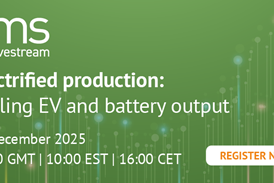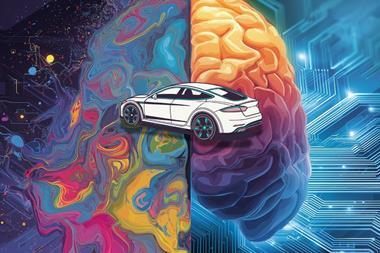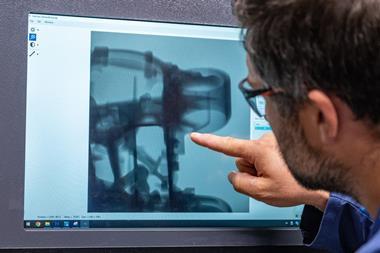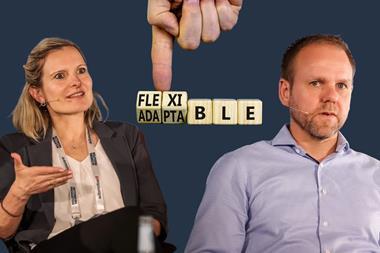Dermot Healy speaks to Daryush Arabnia, COO of Geico, about the new Ctrl + PAINT vehicle body quality scanning system, the latest element in the Smart Paintshop Concept
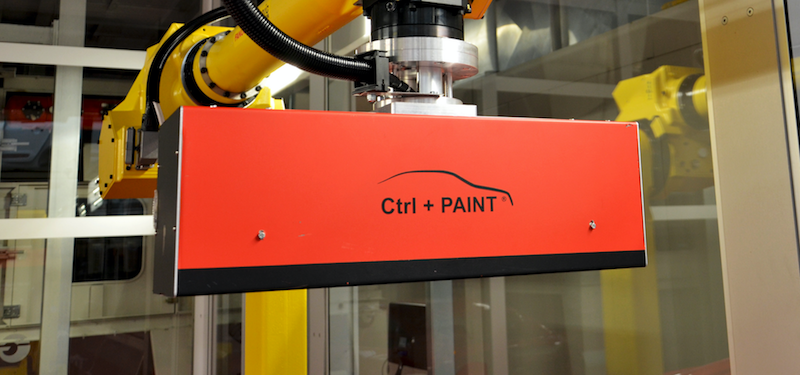 You launched the new initiative Ctrl + PAINT in June 2018 at the 2018 SURCAR Conference in Detroit. Can you tell us about what this system can offer your customers?Daryush Arabnia: Ctrl + PAINT is a quality assessment tool that we believe offers our customers some real advantages over the existing systems on the market. The starting point is to use sophisticated technology in a way that really does answer our customers’ needs, rather than allowing the technology to become an end in itself. Many existing paint assessment tools have been developed by highly accomplished specialist vision technology companies. Their systems are very effective in identifying defects but it is often difficult to get them to operate within appropriate defect parameters. They ‘over report’ which of course presents real difficulties for users. Our approach has been different.
You launched the new initiative Ctrl + PAINT in June 2018 at the 2018 SURCAR Conference in Detroit. Can you tell us about what this system can offer your customers?Daryush Arabnia: Ctrl + PAINT is a quality assessment tool that we believe offers our customers some real advantages over the existing systems on the market. The starting point is to use sophisticated technology in a way that really does answer our customers’ needs, rather than allowing the technology to become an end in itself. Many existing paint assessment tools have been developed by highly accomplished specialist vision technology companies. Their systems are very effective in identifying defects but it is often difficult to get them to operate within appropriate defect parameters. They ‘over report’ which of course presents real difficulties for users. Our approach has been different.
We are not a vision technology company - we have to buy in that expertise – but what we have got on our side is a massive experience of paint lines. We know intimately the environment in which this technology will be used, and we understand the needs of our customers. Our aim with Ctrl + PAINT was to use this experience to produce a body quality scanning system that was simpler, yet significantly more appropriate, for the requirements of our customers when matched against the existing systems on the market.
How does it differ from existing systems. What does it offer your customers that existing systems do not?First, it assesses via topography rather than colour. It is the first system we believe which operates independent of colour yet is capable of detecting defects which are both topographical such as inclusion, but also non-topographical, such as ‘orange peel’. Second, it is much easier to set parameters on our system. Existing systems have no difficulty identifying defects – but the problem is to set parameters that ensure that the only defects that are detected are ones that would be perceived as a defect by the customer. Also, the technology of existing colour-dependant systems means they require consistent dark environments to operate correctly. This can be a severe constraint on their use. The technology of Ctrl + PAINT does not depend on colour, nor is it dependant on a stable light environment. This means it can be integrated into a paintshop far more easily and cheaply, as well as operating more reliably. Both the hardware and the software is simpler and thus significantly less expensive. Ours also is a lightweight system with the scanner having a fraction of the weight of existing systems. As a consequence, it can be installed with much smaller positioning robotics. It can be installed for example immediately after the oven taking up very little space.
Flexibility is another key issue. The system can be configured in accordance with the customers’ needs and the environment where they are located. So defects can be located and identified for robotic remediation, or alternatively they can be highlighted for manual remediation. We can supply augmented reality equipment, which can be used with the system, to assist operators involved in rework, making it much more efficient and effective. Also, of course, our system can much more easily be retrofitted into existing facilities than those currently on the market and this can sometimes be an important consideration for our customers.
Your system can adapt readily to different levels of automation then?Yes - it can work in a highly automated setting but also be configured for manual remediation and it is compatible with both line tracking and stop & go production. A medium sized body shell can be processed by just two robots at a production rate of 45 jph. The package is much smaller and more agile than existing systems, and integrates much more easily into existing production facilities. In other ways also the flexibility of the system is a major benefit.
It works in parallel with the body shell and can deal with complex body panel shapes much more effectively than existing systems. And of course it is important that defect assessment is undertaken by equipment which ‘sees’ the painted surface in the same way that the human eye does.
Does Ctrl + PAINT learn as it scans? Is it capable of producing data to help identify the origins of defects, and modify both the production process and its own defect recognition as it learns?Yes it can. This is an important. For our users it is essential not just to detect defects, but prevent them happening. If a pattern of defect is detected then the quicker the origins of the defect is established the quicker things can be adjusted and the problem solved without extensive wasteful rework being necessary. Our system can produce the data needed to help identify the origins of the defect, and in many cases can be configured to automatically warn and sometimes adjust settings to remedy matters.
Also, of course, the system is continually receiving feedback from the rework process, whether this is carried out robotically or via operators. Operators will use a small tablet which helps identify, locate and display defects which have been detected. This in turn can be used to feedback information about defects which may be regarded as false, so in this way the system learns and adjusts its defect trigger parameters. These same feedback mechanisms can be also used to monitor operator performance and assist in training. The Ctrl + PAINT system data is used to monitor defects and make the production and rework phases more efficient and effective. It links with our J-Suite plant control systems to aid self analysis and build knowledge within the plant.
To what extent then do you see Ctrl + PAINT a final piece in the Smart Paintshop jigsaw? Is it the Smart Paintshop coming now to a mature phase? No! I don’t think that is the way to think of it. We see Smart Paintshop as somethall Industry 4.0 is an industrial revolution. We know from the previous industrial revolutions that each innovation stimulates other innovations. It is a complex evolving process.









